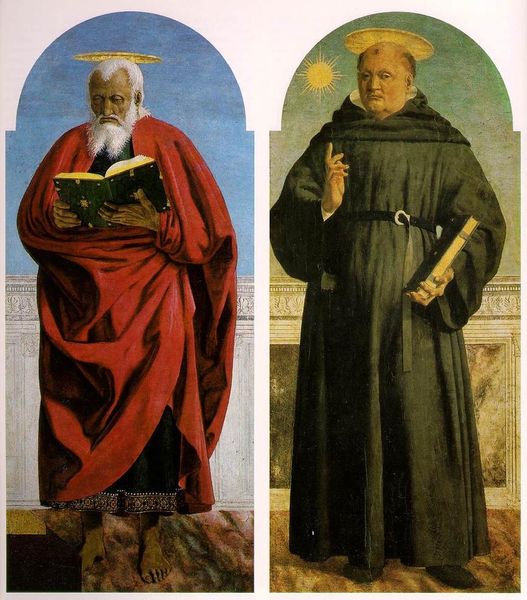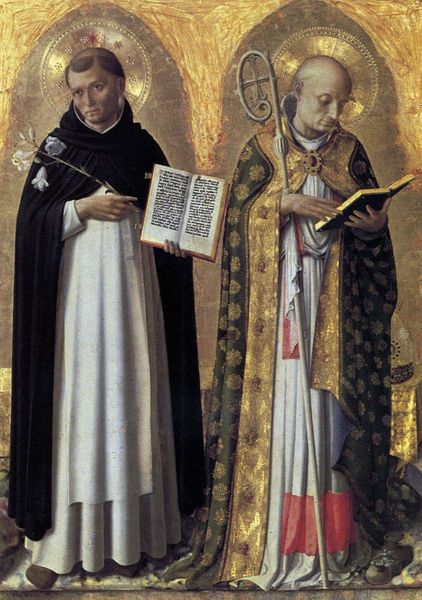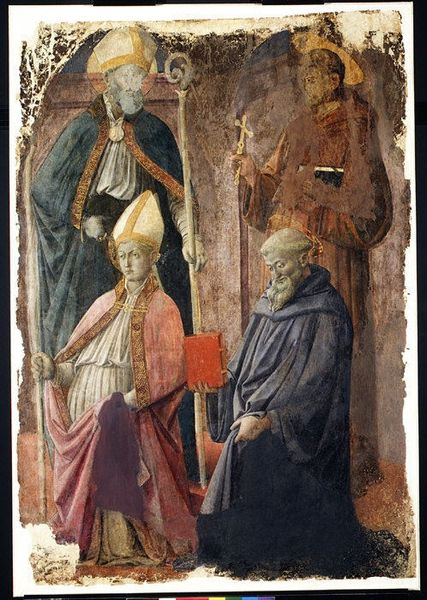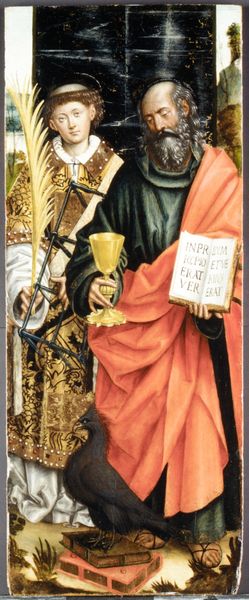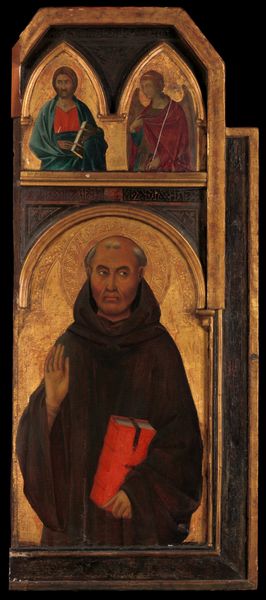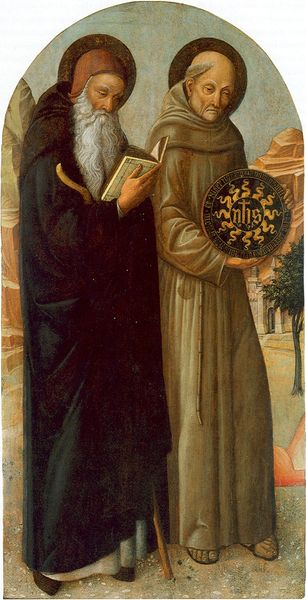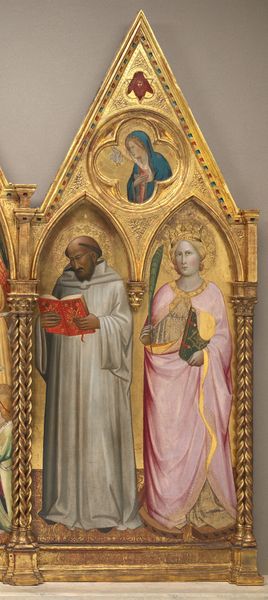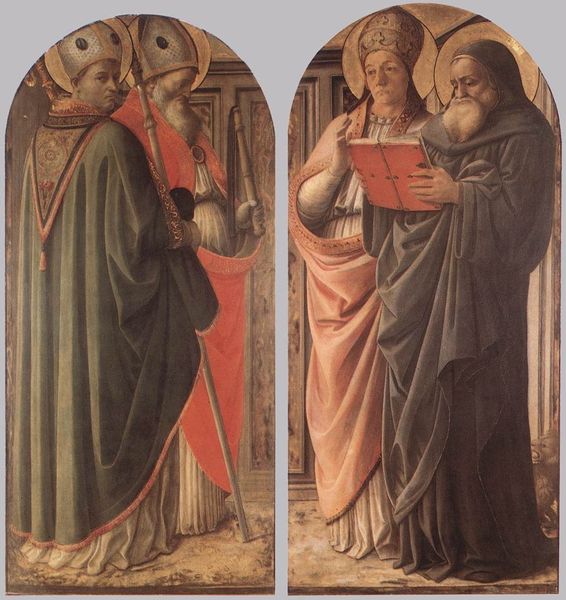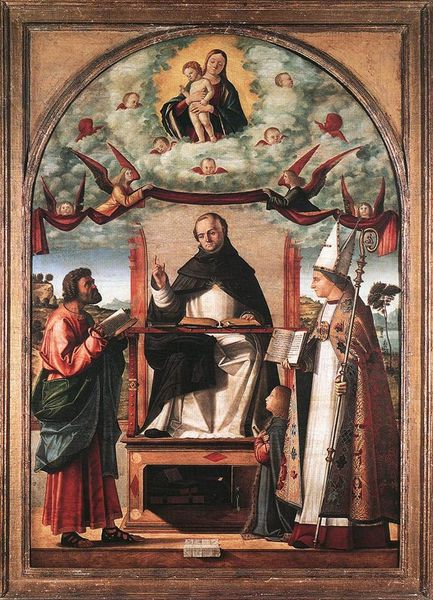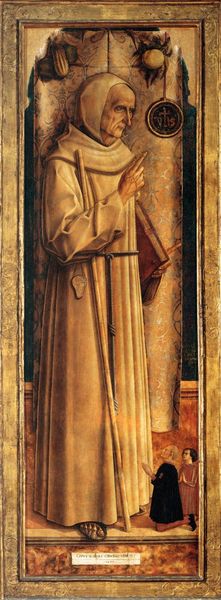
St. Andrew and St. Bernardino 1464
0:00
0:00
pierodellafrancesca
Museo Civico di Sansepolcro, Sansepolcro, Italy
tempera, painting, oil-paint
#
narrative-art
#
tempera
#
painting
#
oil-paint
#
painted
#
figuration
#
oil painting
#
christianity
#
watercolour illustration
#
history-painting
#
academic-art
#
italian-renaissance
#
early-renaissance
#
watercolor
#
christ
Dimensions: 108 x 90 cm
Copyright: Public domain
Curator: Piero della Francesca painted "St. Andrew and St. Bernardino" around 1464. It’s oil and tempera on wood. I'm immediately struck by its stark stillness. Editor: Stillness, yes, but a kind of monumental serenity as well. Note how the gold background flattens the space, throwing emphasis onto the figures themselves. Andrew is almost theatrically draped, and Bernardino, so austere, gestures like a professor giving a lecture. Curator: And there is real social and political weight to that austerity. Bernardino of Siena was a hugely important figure, preaching throughout Italy against social corruption and the excesses of the wealthy. He was a man of the people, of moral probity, canonized only a few years after his death. Editor: Right, but consider too the formal geometry at play here, the way their robes establish almost triangular foundations that anchor the two figures. Piero is a master of rational form. This clarity underscores the humanism of the Early Renaissance, and that sense of order and control which permeated this period in Florence. Curator: Absolutely. These saints are not remote, ethereal figures, but very human in their stances and gestures. We also can't ignore the political role of religious orders in shaping early Renaissance society. The Franciscans especially sought to address poverty and promote social justice. Piero humanizes this mission in his depiction of Bernardino. Note Andrew's downcast expression, seemingly pondering complex moral problems. Editor: Speaking of moral problems, those bare feet on both figures – somewhat disconcerting! Visually, they pull our eyes downward. In terms of the chromatic relationships, there's also a fascinating push-pull between the redness of Andrew’s book and robes and the overall dark hues of Bernardino's habit. This really speaks to me! Curator: For me, those feet ground these saints in reality. By representing them without the trappings of wealth and power, Piero strips away a certain kind of ideological power dynamic. He is showing the sanctity of simple men, and thus suggesting something profound about human potential and, I believe, social progress. Editor: In any case, Piero’s rendering of light and shadow across those faces imbues them with such distinctive and affecting characters. Each form, and each saint, is so carefully defined by his exquisite arrangement of tonal value! Curator: Yes, it’s a fascinating example of how one can embed powerful messages of social critique within seemingly traditional artistic forms. Editor: Agreed. Viewing this image in person provides a masterclass in formal clarity.
Comments
No comments
Be the first to comment and join the conversation on the ultimate creative platform.
